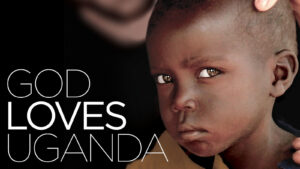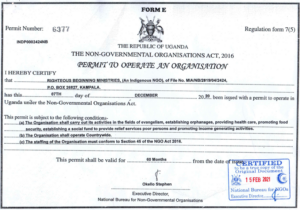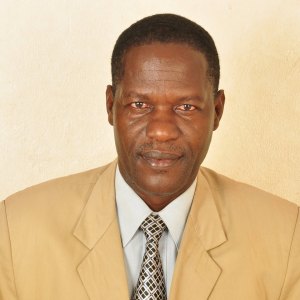
RIGHTEOUS BEGINNING MINISTRIES (RBM)
P.O.BOX 6299 KAMPALA –UGANDA, Tel: +256-782039955, Email: pastorenjoman@gmail.com
INCOME GENERATING PROJECT TO SUPPORT EVANGELISM/CHURCH PLANTING IN UGANDA
- Introduction:
Righteous Beginning Ministries is a Christian church-based organization in Uganda. Basically, we are established to preach the gospel of the Lord Jesus Christ to all communities and to demonstrate the Love of Christ to the hurting and disadvantaged peoples in Africa. Our organization registration number is INDR144062424NB and our NGO permit number is INDP0002424NB.

Having been actively involved in evangelism ministry for many years we have set to improve our outcomes and make greater impact in building the kingdom of God. We believe in opening diverse means of income generation to support our gospel outreaches to more African communities.
- Program activities
The management has prioritized the following three major program activities.
- EVANGELISM & CHURCH PLANTING
- Our team of evangelists and preachers become linked with other partner churches to take the word of God to unreached or less -evangelized communities in other regions of Uganda.
- After a major crusade in a region, we continue support physically and financially efforts and resources that will nurture new converts for at least 4 months. RBM focuses on making disciples and ministers of the Lord Jesus and training them for the work of the much bigger harvest.
- We have planned to raise funds to purchase new evangelism equipment in addition to funding the activities pertaining to crusades and seminars.
- Each year we have planned to conduct four large crusades in different regions of Uganda, in additional to community evangelism out-reach activities.
- CHILDREN EDUCATION AND WIDOWS SUPPORT
- Our teams are convinced that we can contribute greatly to permanent change and development in society by educating the young people to acquire skills and knowledge for self-sustenance.
- This sector emphasizes enrolling children in schools where they will acquire quality job skills and practical learning experiences.
- The budget suggests payment of school fees and material assistance to a total of 42 children in both primary and secondary schools.
- A team of teachers and experienced educationists will help us to run the education assistance by monitoring, reviewing and upgrading relevant aspects of the programme.
- INCOME GENERATION THROUGH CROP AND LIVESTOCK FARMING
Background
In developing countries such as Uganda where national development is anchored on agriculture, the role of improved inputs in boosting agricultural productivity, household income and consequently national development cannot be over-emphasized. For that reason, understanding the factors that influence farmers’ decisions to use improved inputs on the one hand and the effect of these inputs on productivity and commercialization on the other hand, is paramount. This project is anticipated to provide information to farmers and farm chain entrepreneurs on inputs and markets for agricultural productivity. It is also planned that it will address the current income disparities between the rich and the poor and will build the capacity of women and farmer cooperatives in the country to improve productivity without compromising the environment. The project will also address sustainable incomes among low income women through transforming agriculture in Uganda from subsistence to commercial farming. The agricultural sales will be utilized to start income generating activities and will create employment for the women and the youth in the project areas.
The problem
Limited participation of farmers in the market due to subsistence production implies low income, low saving and investment in productive assets, which is likely to perpetuate the vicious cycle of low improved inputs use, low productivity and low commercialization. Furthermore, limited investment in agricultural production leads to environmental degradation. All these in turn limit national employment growth, food security, and economic growth, which further aggravate rural and peri-urban poverty. Thus, enhancing agricultural productivity cannot be emphasized in a country with a population growth rate of 3.2 percent per annum. Increased performance of agricultural sector in Uganda has significant implications on income generation, and poverty reduction, particularly among crop farmers where poverty is more concentrated. To reverse the poor performance of agriculture, various institutional and policy reforms have been pursued over the past decade. Key among the reforms was the establishment of the Plan for Modernization of Agriculture (PMA) in 2000, closely followed by the establishment of the National Agricultural Advisory Services (NAADS) in 2001.The PMA was designed as multi-sectoral policy framework whose main objective was to increase the incomes of poor subsistence farmers through increased productivity and share of marketed output. On the other hand, NAADS was established with the mandate of increasing farmers’ access to information, knowledge and improved agricultural technologies through the overhaul of the extension services delivery system from supply-driven to a demand-driven service .Other areas of NAADS intervention to support farmer productivity and participation in the market included support to formation of farmer groups and savings and credit cooperatives. Despite the establishment of PMA, NAADS and increased government funding to agricultural sector, agricultural productivity remains constant or declined in some subsectors. The NDP and Development Strategy and Investment Plan (DSIP) highlight a number of binding constraints to increased agricultural production and productivity in Uganda. They include among others: limited access to and use of improved inputs such as high yielding seeds and fertilizer, and limited access to markets partly due to the subsistence-oriented nature of Smallholder production.
It is at this background that this project is thought to be useful in laying a foundation for the community transformation and fighting income and gender disparities at the same time. It is also thought that the proceeds from the initial project implemented will act as a base for the development and establishment of other income activities not limited to those activities that use agricultural produce and wastes. To mention these include, making wax candles, Liquid soap, Making of briquettes for local ovens to replace charcoal and save the environment among others.
JUSTIFICATION
Church planting and evangelism programs require huge sums of money to be invested, which requirements, member’s contributions and offerings may not be able to adequately meet. Supplementary income to the churches in Africa, through direct income generation make meaningful contribution to sustaining church activities. More so the agricultural interventions will ensure food security among households, empower women and the youth especially school drop outs in skills and knowledge in selecting, planning and managing income generating activities. This will further address self-initiatives and sustainability of resources among the beneficiaries hence the need for its implementation.
Improved household incomes will enable vulnerable people like widows and orphan youths including those affected by HIV. /AIDS scourge, to access affordable health treatment and adequate nutrition in order to live better lives.
OBJECTIVES
- To promote access to sustainable household income through establishment of IGAs among the low income persons.
- To offer valuable information that promotes effective use of improved inputs in agricultural production among low income women in the country.
- To increase the capacity of widows and vulnerable youths to access, control and manage assets and, services including land, water, and technology among others.
PROJECT DESCRIPTION
The major agricultural activities will include growing of commercial crops and piggery, whose outputs are sold to earn income to support evangelism, church planting and livelihood support for vulnerable families within our church congregations.
Adequate land will be secured, being hired in rural and sub-urban areas where rental charges are low and affordable.
Initially we will start from 10 acres of land prepared for growing crops that mature within one year such as onions, maize, beans cassava and sweet potatoes. Only about half an acre will be reserved for piggery houses. We plan also to buy 50 piglets and rear them until they produce more piglets for sale and adult pigs to be supplied to pork butcheries.
Some women will also be involved in agricultural training activities to grow vegetables and fruits for boosting food and nutrition requirements in their families. This intervention is aimed at mobilizing more people especially the less advantaged and low income earners to be actively involved in generating more income to improve living conditions in the families and communities.
Further skills will be introduced to the participants in business management, group and team dynamics and psychosocial and spiritual counseling.
Health campaigns particularly HIV/AIDS awareness and counseling will be conducted to all members and their immediate family members.
EXPENDITURE PROJECTIONS FOR THE FARMING AND LIVESTOCK PROJECT
| Item | Description | Unit cost | Amount(UGSH) | |
| 1 | Land (hire) | 10 acres | 300,000 | 3,000,000 |
| 2 | Seeds | assortment | 4,670,000 | |
| 3 | Farm tools/equipment | assortment | 7,200,000 | |
| 4 | Labour | 4 workers | 200,000 | 800,000 |
| 5 | Add Piggery costs | 34,414,000 | ||
| Total in UGSHS | 50,084,000 | |||
|
Total in US Dollars |
USD 13,912 |
|
DETAILED PIGGERY PROJECT costs (50 PIGS) DURATION 1year |
|||||
| Operational Costs | |||||
| S/NO | ITEM | QUANTITY | UNIT COST(UGX) | TOTAL COST(UGX) | REMARKS |
| 1 | Piglets | 50 | 150,000 | 7,500,000 | Combro/Long White Breed |
| 2 | Treatment | 50 | 4,000 | 1,200,000 | Six Months |
| 3 | Feeds | 200 | 50,000 | 10,000,000 | Sacks of 100kg |
| 4 | Water | 6000 | 100 | 600,000 | Jerrycans |
| 5 | Male Pig | 3 | 250,000 | 750,000 | 4 Months Old |
| 6 | Wages for 2 | 12 | 400,000 | 4,800,000 | |
| Sub Total | 24,850,000 | ||||
| Construction Costs | QUANTITY | UNIT COST(UGX) | TOTAL COST(UGX) | ||
| 1 | Aggregate | 2 | 360,000 | 720,000 | For Concrete Floor |
| 2 | Iron Sheets | 80 | 30,000 | 2,400,000 | |
| 3 | Half Bricks | 1000 | 200 | 200,000 | |
| 4 | Big Poles | 50 | 18,000 | 900,000 | |
| 5 | Roofing Poles | 40 | 9,000 | 360,000 | |
| 6 | Cement | 12 | 32,000 | 384,000 | |
| 7 | Lake Sand | 2 | 240,000 | 480,000 | |
| 8 | Plaster Sand | 1 | 240,000 | 240,000 | |
| 9 | Nails | 1 | 85,000 | 85,000 | 1 Bag |
| 10 | Timber 12*1 | 90 | 15,500 | 1,395,000 | |
| 11 | Construction Labour | 1 | 2,400,000 | 2,400,000 | |
| Sub Total | 9,564,000 | ||||
|
Total cost on piggery |
34,414,000 | ||||
PROJECT MANAGEMENT
The project will be managed by the RBM management and administration team. The Managing Director will oversee the implementation of this project while the Projects Director will manage its implementation, assisted by the community co-ordinators. Group Leaders and community trainers will be selected from each cluster of trainers. They will carry out daily supervision and monitoring activities, recording costs, and incomes on daily basis.
MONITORING AND EVALUATION
The project will have a mid-term review and continuous evaluation at least once in each quarter. The end term evaluation will be done to inform the project replication and development of the new project cycle. The Projects Director shall submit monthly reports to the Managing Director. These reports, routine field visits and other relevant information from participating members will be instrumental for quarterly reviews.
Expected outcomes of the project
- Increased household and ministry incomes
- Increased IGA opportunities in the communities
- Increased social capital among farmers and farmers groups
- Improved nutrition of the PLAs and OVCs
- Improved health among households
- Increased retention in school for school age going children
- Improved literacy , entrepreneurial and vocational skills
- Increased level of food security at household level
CONCLUSION
Access to commercial agriculture and Income Generating Activities will establish the foundation for food security and the sustainable household income among the low-income households in the project communities in rural parts of our country, Uganda.
The funding request towards financing the agricultural project activities for a period of one-year amounts to USD 13,912 only.
Contact person:
Managing Director
Pastor Enjoman, James Obura
Telephone; +256-782039955
Email: pastorenjoman@gmail.com

